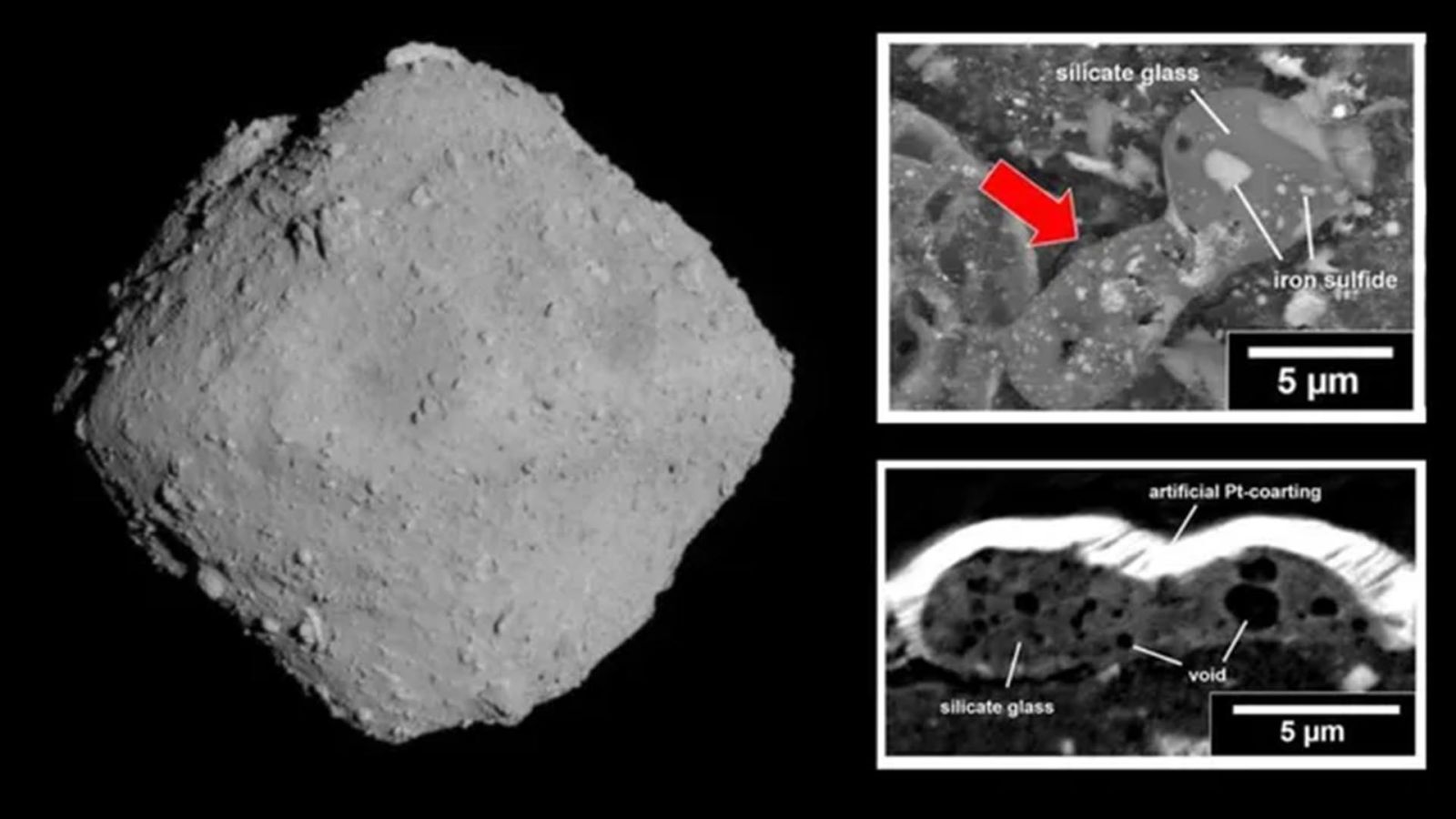Ryugu Asteroid Samples Reveal Secrets About the Origins of Life
Follow us on Google News (click on ☆)

The Ryugu asteroid.
Top insert: A splash of Ryugu surface melt.
Bottom insert: A slice of melt splash showing voids.
Image Credit: (Main) JAXA/ (Insert) Megumi Matsumoto et al.
A team of scientists, including Assistant Professor Megumi Matsumoto from Tohoku University, discovered in these samples "melt splashes" ranging from 0.0002 to 0.0008 inches (5 to 20 micrometers), formed by the impact of cometary dust. These splashes contain carbonaceous materials similar to primitive organic matter.
Comets mostly evolve in the icy confines of the Solar System. When they approach the Sun, their inner icy material sublimates due to solar heat, releasing gases that carry along a portion of the comet's surface. This process forms the characteristic tails of comets and leaves trails of cometary dust around the Sun. On Earth, we observe these dust particles as meteors when they burn up in our atmosphere.
On atmosphere-less bodies like Ryugu, these cometary materials can be preserved, thus offering precious clues about the material present in the primitive Solar System. Scientists used computer tomography to examine the melt splashes, revealing the presence of carbonaceous materials. These materials differ chemically from usual cometary organic matter, being devoid of oxygen and nitrogen.
The team suggests that these carbonaceous materials formed from cometary organic matter through the evaporation of volatile compounds, such as nitrogen and oxygen, due to the heat induced by the impact. This discovery supports the idea that cometary matter was transported to the Earth's vicinity from the edges of the Solar System.
Furthermore, the splashes contain voids created by the evaporation of water during impact. Chemical analyses indicate that Ryugu's hydrated silicates mixed with the cometary dust.
This ongoing research, which continues to analyze Ryugu samples, could provide further information on the transport of primordial organic matter in space surrounding Earth over 4 billion years ago, before life appeared.